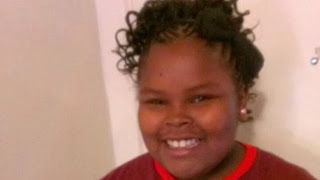 Yesterday, before the Superior Court extended its TRO to January 7, the Mcmath/Winkfield family filed a petition for writ of mandamus in the 1st Appellate District of the California Court of Appeal, seeking to vacate the Superior Court's December 26 order, denying the family's petition to continue ICU-type measures for petitioner.
Yesterday, before the Superior Court extended its TRO to January 7, the Mcmath/Winkfield family filed a petition for writ of mandamus in the 1st Appellate District of the California Court of Appeal, seeking to vacate the Superior Court's December 26 order, denying the family's petition to continue ICU-type measures for petitioner.Today, December 31, 2013, the Mcmath/Winkfield family filed a Status Report with the Court of Appeal, requesting immediate relief and an order compelling Oakland Children's Hospital to place certain medical devices in Jahi Mcmath necessary for her transfer to an outpatient facility.
The California Court of Appeal denied this request. The appellate court instructed the attorney to instead seek such relief in the Alameda County Superior Court, pursuant to that court's order of December 26, 2013, which states in pertinent part: "In the event . . . petitioner wants an increased level of treatment and support that CHO is unwilling to provide, then the parties may seek the assistance of the court at any time."
The Court of Appeal is aware that the Superior Court extended its temporary restraining order to 5:00 p.m. on January 7, 2014, thereby precluding the hospital from removing Jahi Mcmath from the ventilator or ending any of the current treatment and support provided until after that deadline.
In light of the Superior Court's December 30 order, the California Court of Appeal instructed Mcmath's attorney to file a status report by 4:00 p.m. on Friday, January 3, 2014, providing current information on any matter pertinent to this petition, including, but not limited to, the parties' specific plans for transporting Mcmath to a different facility. (J.M. et al. v. The Superior Court of Alameda County, No. A140590.)

.jpg)

































